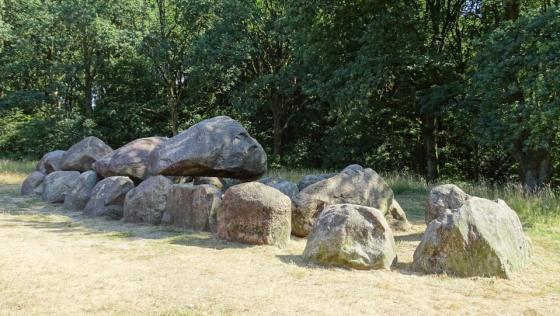Visited: September 13, 2013
Hunebed D13 Eext is unique amongst the Dutch hunebedden in two ways. Firstly, it is the only one that is still surrounded by its original barrow, and secondly, its entrance portal was on top of the barrow (rather than through the side), the grave chamber being accessed down a flight of three steps. From the top of the mound you can clearly see the full complement of six sidestones and two endstones. Unlike the majority of hunebedden, where the sidestones were separated by spaces which were originally filled in with smaller stones, those at D13 Eext have been placed very close together.
On May 21, 1976, while excavating a trench for a new sewer in the centre of Eext, a large flat stone, which had been used for centuries to cover a culvert, came to light. Investigation showed it to be one of the missing capstones of D13 Eext, and three days later it was replaced on its hunebed. It is rumoured that another capstone lies buried in the ground somewhere in the neighbourhood of the church. The fate of the third capstone is unknown. It may have been broken up and used for dyke reinforcement, but there is always the hope that it may some day turn up in the area.
D13 was first discovered around 1736 by a ‘stone seeker’ who was probing the mound for stones to sell, and subsequently the capstones were removed although the chamber was left untouched. D13 can be found in a small wooded area between Eext Sportpark and Stationsstraat at the south of the village.

You can view a short video about D13 Eext on YouTube.
















































